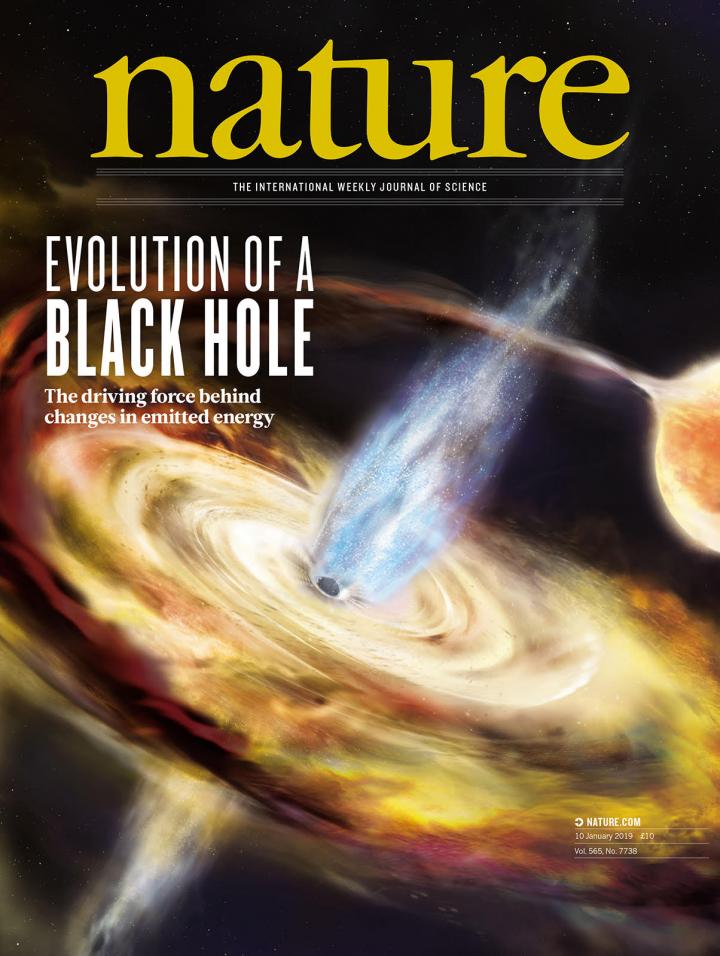Black hole research involving WSU astronomer makes front cover of Nature

An article co-authored by Wayne State astronomer Dr. Ed Cackett is featured on the front cover of the prestigious journal Nature. The research, led by Dr. Erin Kara (University of Maryland) and involving Wayne State's Dr. Cackett, uses "light echoes" to map the region close to a newly discovered black hole in unprecedented detail.
The black hole, called MAXI J1820+070 ("J1820" for short), was discovered in March when it brightened dramatically in X-rays. J1820 is in a binary star system and had begun swallowing gas from its companion star. As the gas swirls around the black hole in an "accretion disk" it gets extremely hot, glowing brightly in X-rays. NASA's Neutron Star Interior Composition Explorer (NICER) payload aboard the International Space Station began regularly monitoring the X-ray emission from this black hole, to try and learn how gas falls into black holes. Dr. Cackett is part of the NICER Science Team and took part in analyzing the data and interpreting the results.
The research showed that the accretion disk of gas falling into the black hole gets very close to the event horizon (the point of no return). It also shows that a "corona" of hot gas lies close to the black hole and that it evolves in size as the X-ray emission changes, contracting from about 100 miles to only 10 miles. J1820 is about 10 times the mass of the sun and lies at a distance of approximately 10,000 light years. It therefore just appears like a point in the sky and is far too small to image directly. So, the team used a technique dubbed 'reverberation mapping' which uses echoes of light to infer the size of the emitting region, and how it changes over time.
Dr. Cackett said, "It is very exciting to be able to see how the region directly surrounding the black hole changes as it consumes gas from the companion star. NICER's unique sensitivity and accurate timing abilities allowed us to measure these light echoes, and hasn't been possible with such detail previously."
Press release: Astronomers map 'light echoes' of newly discovered black hole
Original article: The corona contracts in a black-hole transient
Nature News & Views article: Black hole goes with the flow